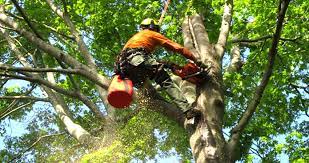Tree pruning is a vital aspect of arboriculture that requires careful consideration of seasonal variations. The timing of tree pruning can significantly impact the health and appearance of trees. Mastering the art of tree pruning throughout the year involves understanding the unique needs of trees during different seasons. In this guide, we’ll explore the seasonal strategies for tree pruning, emphasizing the importance of proper timing and the role of tree pruning services in Adelaide.
Spring: Stimulating Growth and Shaping Canopies
Purpose of Spring Pruning
Spring marks the beginning of the growing season, making it an opportune time for tree pruning. The primary goals during spring pruning are to stimulate new growth, shape canopies, and address any winter damage. With the arrival of warmer weather, trees are ready to channel their energy into budding and producing new shoots.
Techniques for Spring Pruning
Deadwood Removal: Identify and remove dead or diseased branches, promoting overall tree health.
Shaping Canopies: Shape the tree canopy by selectively pruning branches to achieve a balanced and aesthetically pleasing form.
Thinning Crowns: Thin the crown to improve air circulation, reducing the risk of diseases and encouraging sunlight penetration.
Summer: Controlling Size and Directing Growth
Purpose of Summer Pruning
Summer is a season of active growth, and pruning during this time helps control the size of trees and direct their growth. This is particularly important for maintaining the desired shape and preventing overcrowding of branches. Additionally, summer pruning is effective for managing water sprouts and controlling the overall structure of the tree.
Techniques for Summer Pruning
Size Control: Prune to control the size of the tree, preventing it from encroaching on structures or neighboring plants.
Water Sprout Removal: Remove water sprouts, which are vigorous vertical shoots, to maintain the desired structure and aesthetics.
Thinning for Light Penetration: Thin out excess growth to improve light penetration, benefiting both the tree and the plants below.
Fall: Preparing for Dormancy and Hazard Reduction
Purpose of Fall Pruning
Fall is a transitional period as trees prepare for dormancy. Pruning during this season focuses on preparing the tree for winter by removing deadwood, reducing potential hazards, and addressing any structural issues. Fall pruning is also ideal for improving the tree’s resistance to winter storms.
Techniques for Fall Pruning
Deadwood Removal: Eliminate deadwood to prevent it from falling during winter storms, reducing the risk of property damage.
Structural Pruning: Assess and address any structural issues that may pose a risk during winter, ensuring the tree’s stability.
Disease Management: Identify and address any signs of disease, preventing them from spreading during the dormant season.
Winter: Structural Pruning and Dormancy Preparation
Purpose of Winter Pruning
Winter is a season of dormancy for many trees, making it an opportune time for structural pruning. With leaves gone, the tree’s structure is more visible, allowing for a thorough assessment and strategic pruning to enhance its form and integrity.
Techniques for Winter Pruning
Structural Pruning: Focus on shaping the tree’s structure, removing crossed branches, and improving overall form.
Thinning for Airflow: Thin out branches to improve airflow within the canopy, reducing the risk of fungal infections.
Selective Pruning: Identify and selectively prune branches for a well-balanced and aesthetically pleasing appearance.
The Importance of Proper Timing in Tree Pruning
Proper timing is crucial in tree pruning to ensure the tree’s response is optimal and the risk of stress or disease is minimized. Each season offers unique advantages for specific pruning objectives. Spring and summer are ideal for encouraging growth and directing the tree’s form, while fall and winter are opportune times for structural pruning and dormant season preparations.
The Role of Tree Pruning Services in Adelaide
Local Expertise for Adelaide’s Climate
Adelaide’s climate has its own set of challenges and considerations when it comes to tree care. Professional tree pruning services in Adelaide bring local expertise, understanding the unique needs of plants in the region. This knowledge is vital for tailoring pruning practices to suit Adelaide’s climate, ensuring the health and resilience of the trees.
Safety and Precision
While tree pruning can be undertaken as a DIY project, the involvement of professional tree pruning services in Adelaide brings an added level of safety and precision. Arborists with experience in tree pruning employ the right techniques and equipment to ensure the safety of both the plants and the people involved in the process. Precision pruning is essential for achieving the desired aesthetic outcomes while promoting the health of the tree.
Conclusion:
Mastering tree pruning techniques throughout the year involves a careful consideration of seasonal variations and the unique needs of trees during each period. Proper timing is crucial for achieving specific pruning objectives and ensuring the health and appearance of trees. Whether it’s stimulating growth in spring, controlling size in summer, preparing for dormancy in fall, or focusing on structure in winter, each season offers distinct opportunities for tree pruning.
In Adelaide, where the climate poses specific challenges, the expertise of tree pruning services in Adelaide becomes invaluable. These professionals bring a deep understanding of local conditions, ensuring that pruning practices align with the unique needs of trees in the region. As you embark on the journey of seasonal tree pruning, consider the benefits of professional services in Adelaide. Let your trees thrive in every season, contributing to a healthier and more vibrant outdoor environment. Tree Pruning Services In Adelaide are your allies in this endeavor, ensuring the well-being and longevity of your cherished green assets.






